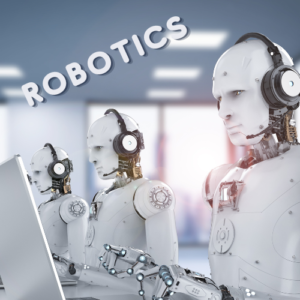
Robotics is a multidisciplinary branch of engineering and science that involves the design, construction, operation, and use of robots. Robots are programmable machines that can carry out tasks autonomously or with human control. These machines are typically equipped with sensors, actuators, and a processing unit to perceive, comprehend, and respond to their environment.
The field of robotics encompasses various subfields, including mechanical engineering, electrical engineering, computer science, and artificial intelligence. Mechanical engineering focuses on designing the physical structure and mechanisms of robots, ensuring their stability, strength, and ease of movement. Electrical engineering involves the design and integration of electronic components and systems within robots, such as motors, sensors, and power sources.
Computer science plays a vital role in robotics by enabling robots to process information, make decisions, and execute actions. This involves programming the robots with various algorithms and control systems. Additionally, artificial intelligence (AI) plays a significant part in developing intelligent robots capable of learning from their interactions and adapting their behavior accordingly.
Sensors are crucial elements in robotics, allowing robots to perceive and interact with their surroundings. These sensors include cameras, infrared sensors, sonars, LIDAR (Light Detection and Ranging), and touch sensors, among others. They provide robots with data about nearby objects, distances, positions, and other relevant environmental factors.
Actuators are responsible for converting electrical signals into mechanical motion. Common types of actuators used in robotics are electric motors, pneumatic actuators, hydraulic actuators, and piezoelectric actuators. These mechanisms enable robots to perform physical tasks, such as movement, picking up and manipulating objects, and even intricate surgical procedures.
The applications of robotics technology are far-reaching and diverse. In manufacturing industries, robots are widely employed for automating repetitive tasks in assembly lines, leading to increased efficiency and productivity. In healthcare, robots are utilized in surgeries, diagnosis, patient monitoring, and rehabilitation. The exploration of hazardous environments, including space and deep-sea exploration, is facilitated by robots due to their ability to withstand extreme conditions.
Another rapidly expanding area is assistive robotics, where robots are designed to aid individuals with disabilities or limitations in carrying out daily activities. Additionally, the field of autonomous vehicles is revolutionizing transportation, with self-driving cars and drones showcasing the potential for efficient and safe transportation systems.
In conclusion, robotics technology is a dynamic field characterized by the integration of mechanical engineering, electrical engineering, computer science, and artificial intelligence. Through the use of sensors, actuators, and programming, robots are designed to perceive and interact with their environment, enabling them to carry out a vast array of tasks across various industries and domains.
